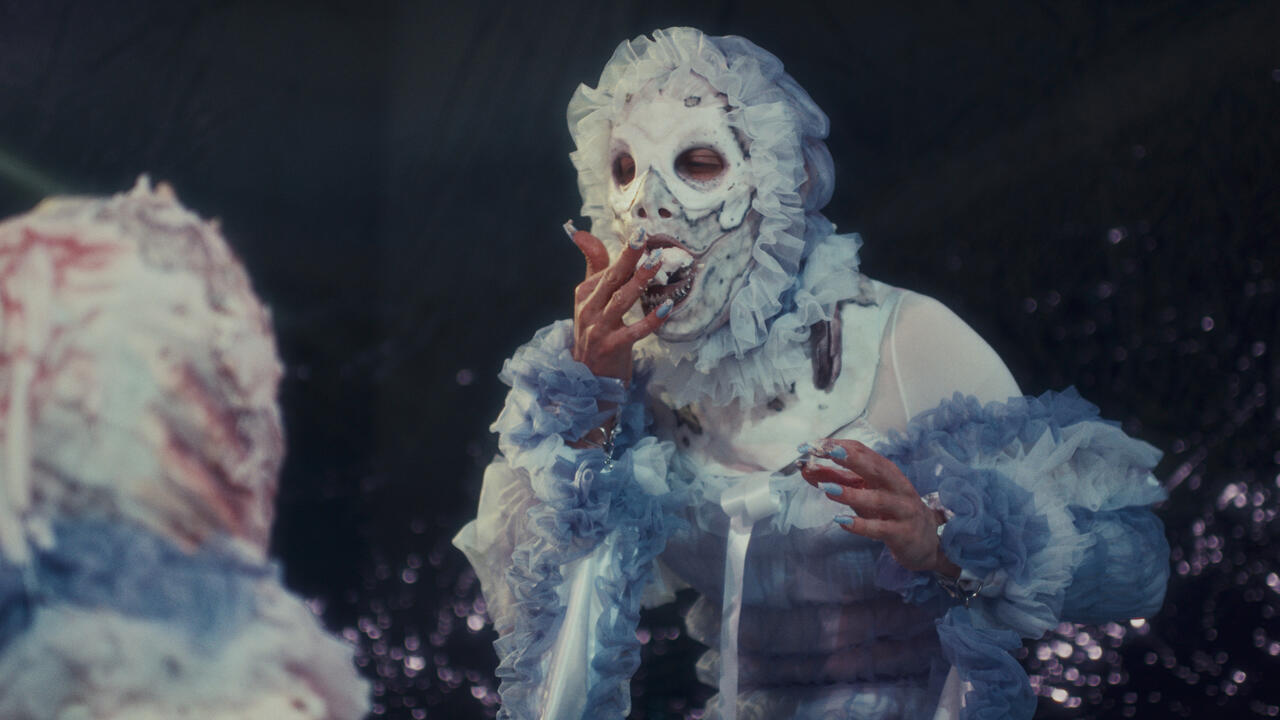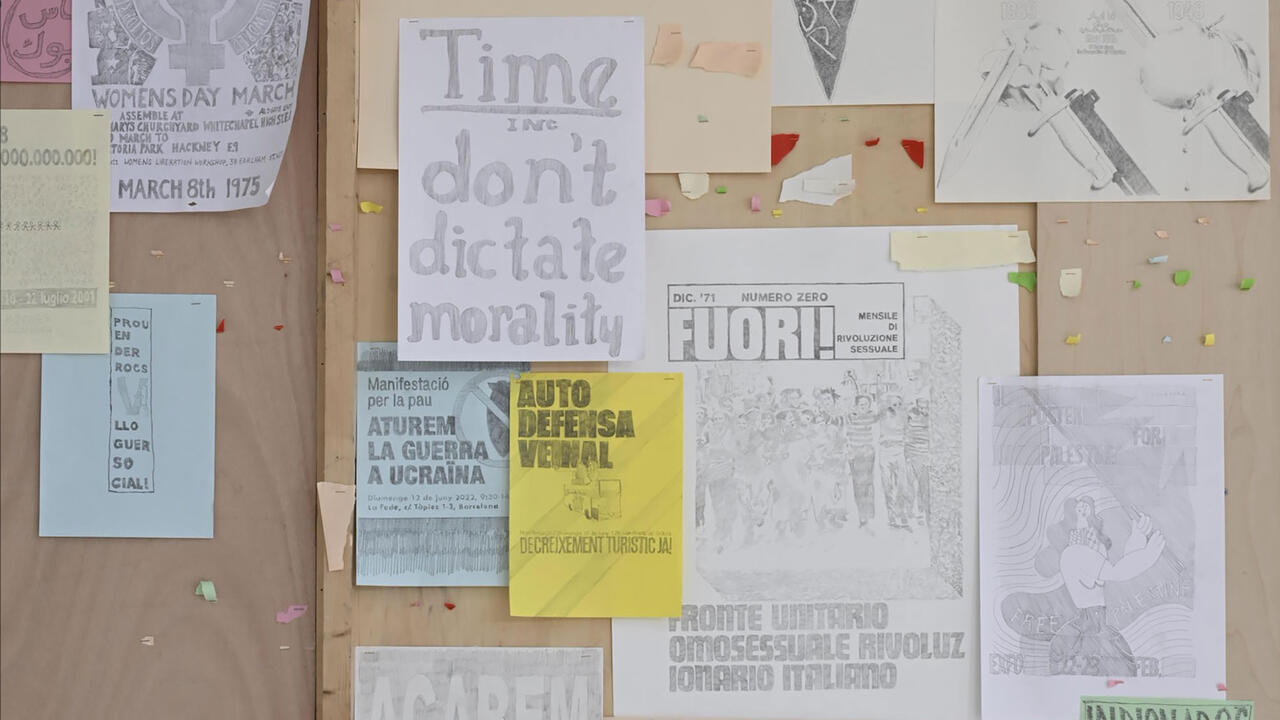Adrià Julià
Espai 13, Fundació Joan Miró, Barcelona
Espai 13, Fundació Joan Miró, Barcelona

In 1919, it was discovered that the 12th-century frescos of Santa Maria de Mur monastery, in the shadow of the Catalan Pyrenees, had been taken by Italian restorers in cahoots with an American antiquarian, sold off by the municipal rector then bought by the Museum of Fine Arts Boston, where they are displayed to this day. Powerless to stop this brazen looting, the Board of Museums of Barcelona embarked on a drastic project of pre-emptive conservation in order to stop further plunder. For the next five years, it negotiated the purchase and planned the removal of a further ten surviving frescos from religious buildings across Catalonia. These paintings are now among the highlights of Barcelona’s Museu Nacional d’Art de Catalunya (MNAC).
Adrià Julià’s exhibition ‘Hot Iron’ set up counterpoints to this asset stripping and image transfer through film, video, and a display of an archive of 24 photographic albums documenting Romanesque churches, Archives of Ramon Julià Alemany (reading number 1) (c. 1950–2017). The precarious technique of removing frescoes involves tearing off the pictorial layer from the plaster before it is reapplied to a new support. Julià’s conceptual cinematic strategy likewise evokes hazardous rippings-out. There is an unavowed biographical element at play here, too: Julià was born in Barcelona but relocated to Los Angeles more than a decade ago; the albums, that catalogue more than 500 churches, were put together by his grandfather.

The two-part Rocky's Ghost Ascending the Staircase (MNAC) (2017), comprises a 16mm colour film loop of a young woman running up the stone steps that lead up to the MNAC. It is a remake of the demonstration reel for the Steadicam, the camera stabilization invention that found fame via the sequence in the 1976 movie Rocky in which Sylvester Stallone’s boxer character triumphantly scales the steps in front of the Philadelphia Museum of Art. The fact that the latter museum is home to Marcel Duchamp’s own technical breakthrough, Nude Descending a Staircase (No. 2) (1912), is more than just a neat echo. It is also the site of Duchamp’s own Catalan-American transfer – the wooden door of Étant donnés (1946–66) was brought to the U.S. from the town of La Bisbal.
The second element of Julià’s moving image work is projected on a suspended screen. It shows an array of black-and-white enlargements, website print-outs, photocopies and texts pertaining to all of the above and more – a field of salvaged testimony and fractured evidence. The video is a close-up of a digital photograph of a wall surface covered with documents and prints, a screencast whose gliding movements were made by the analogous exploratory scrolls and gestures of a hand and computer mouse.

Conspicuous among this visual interface are sports memorabilia webpages and archival images corresponding to the importation of American football to Barcelona. The Barcelona Dragons was a professional American football franchise founded in 1991 whose home ground until the team’s dissolution in 2003 was the Olympic stadium on the same hill as the MNAC, as well as Fundació Joan Miró. In the video, shots of stadium lighting rigs and team kit on eBay are on the same image playing field as fresco details, fused to their new substrate like scabs. At one moment, a mural motif of Christ’s hand seems to double-tap the screen. As the viewpoint moves across excerpts from guide books, aerial photographs, museum correspondence from the 1920s, and so on, we can simultaneously observe a territory as if from a low-altitude drone and browse a marketplace of historical content. It is common to hear reservations about research-based art that does not transcend its sources. Yet here, Julià’s evocation of both a Steadicam-smooth perspective on the past, as well as a history that is torn-out and displaced, takes place in spite of the suspicion that although the bigger picture might exist, it is simply not available.
Main image: Adrià Julià, ‘Hot Iron’, 2016-17, installation view, Espai 13, Fundació Joan Miró. Courtesy: Fundació Joan Miró, Barcelona; photograph: Pere Pratdesaba





















